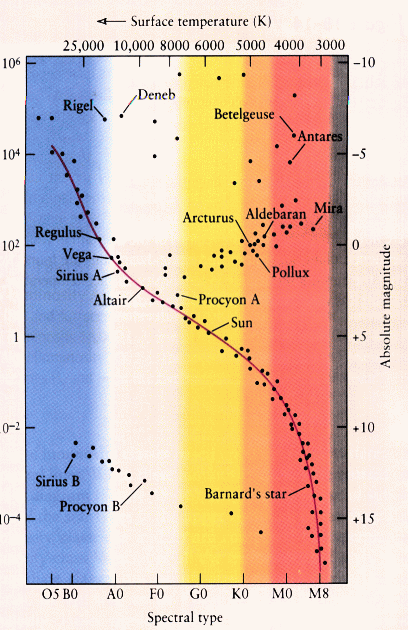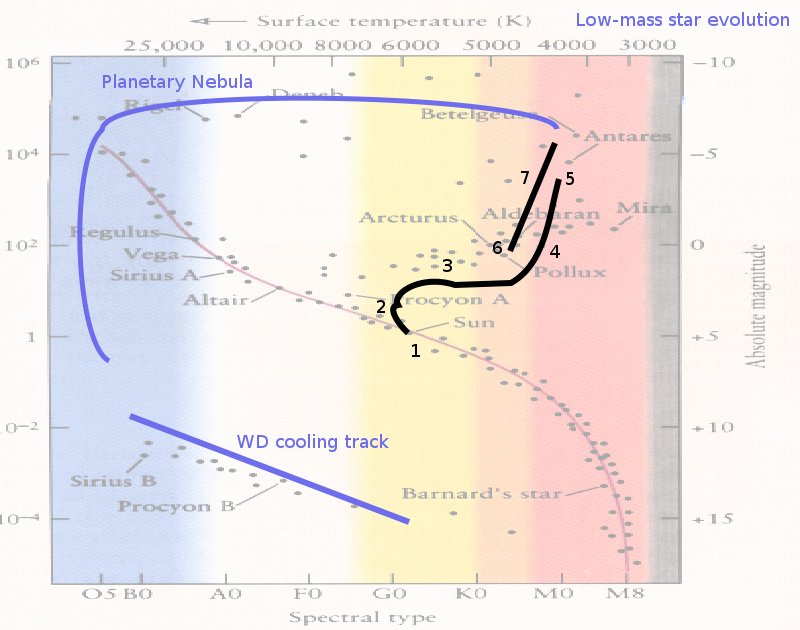Astronomy: H-R Diagram



Some stages in the life of a one-solar-mass star:

- Main sequence.
Longest phase. 10 billion yr.
Fuel: Core H fusion.
Central temperature around 15 million K.
- Main sequence turn-off.
Fuel: Core H fusion. He building up in core.
Star brightens, gets slightly larger.
- Subgiant branch.
Fuel: Core H fusion switches to "shell" geometry as He fills center.
Luminosity stays about constant as the star grows in radius and cools in temperature.
- Red giant branch.
Fuel: Shell H fusion. Shell gets larger and thinner in thickness.
Star gets more luminous and cooler, and much larger.
- Helium Flash. Not a phase - it's a near-instantaneous event when helium fusion begins.
Core temperature about 100 million K.
- Helium main sequence (also known as "red clump" if it hugs the giant branch, or "horizontal branch" if it spreads out to hotter temperatures).
2nd-longest phase. Roughly 0.4 billion yr.
Fuel: Core He fusion.
Star is a stable red giant.
- Asymptotic giant branch.
Fuel: H and He fusion in shells.
Star puffs to its largest size yet, and gets very luminous. At the end of AGB, the star sheds its outer layers and makes a dust cloud.
- Planetary Nebula. Shortest phase: 10,000 yr.
No fusion. Latent heat powers nebula.
The material previously shed gets lit up and ionized as the naked CO core is revealed.
- White dwarf.
No fusion.
What was once the core of the star is now a stellar remnant 1/100th of the size it was on the main sequence.
For all stages 1-4 and 6-7, the core of the star always shrinks, gets more dense, and gets hotter, even as the outer parts of the star are generally doing the opposite: getting puffier and cooler.
Last modified: Tue Mar 30 09:10:54 CST 1999






